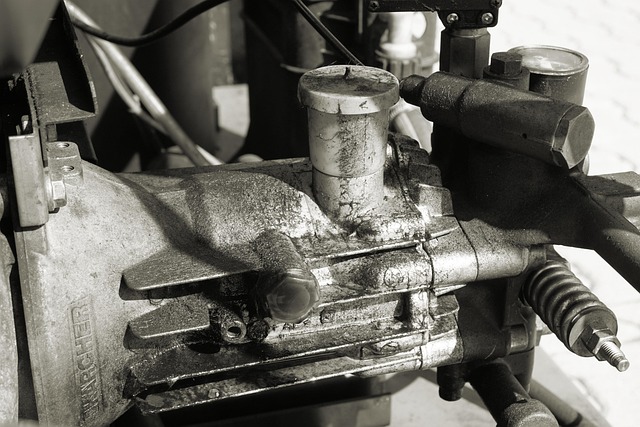Portable Laser Welding Machines Enhance Precision and Efficiency in United Kingdom
In United Kingdom, portable laser welding machines are transforming the welding landscape by enhancing precision, saving time, and reducing costs. This technology is particularly beneficial in various sectors, including manufacturing and construction. A closer look at different models, pricing structures, and practical applications reveals their growing significance in welding fabrication processes. Additionally, effective welding training for workers is essential to maximize the potential of these advanced machines.

Modern manufacturing in the United Kingdom increasingly relies on advanced welding technologies to maintain competitive advantages in global markets. Portable laser welding machines represent a significant leap forward from traditional welding methods, offering manufacturers the flexibility to perform high-quality welding operations directly at the worksite. This technology combines the precision of laser welding with the convenience of portability, making it an attractive solution for diverse industrial applications.
Understanding Portable Laser Welding Machines and Their Benefits
Portable laser welding machines utilise focused laser beams to create precise welds with minimal heat-affected zones. Unlike conventional welding methods that require extensive setup and produce significant heat distortion, these machines deliver concentrated energy directly to the weld joint. The technology offers numerous advantages including reduced material distortion, faster welding speeds, and the ability to weld dissimilar materials effectively. British manufacturers particularly value the consistent quality and repeatability that laser welding provides, essential factors in maintaining stringent quality standards required in industries such as medical device manufacturing and precision engineering.
The portability aspect addresses a critical need in modern manufacturing environments where components may be too large or complex to transport to fixed welding stations. These machines typically weigh between 20-50 kilograms and can be easily moved between workstations or taken to remote locations for on-site repairs and assembly work.
Applications of Welding Fabrication in Various Industries
The versatility of portable laser welding machines has opened new possibilities across multiple sectors in the United Kingdom. In the automotive industry, manufacturers use these machines for welding lightweight materials such as aluminium and advanced high-strength steels, contributing to vehicle weight reduction and improved fuel efficiency. The aerospace sector benefits from the technology’s ability to create precise welds on critical components where structural integrity is paramount.
Marine engineering companies along the UK coastline have adopted portable laser welding for shipbuilding and repair operations, particularly for stainless steel components that require corrosion resistance. The construction industry utilises this technology for architectural metalwork where aesthetic appearance and structural strength are equally important. Additionally, the renewable energy sector employs portable laser welding in the manufacture and maintenance of wind turbine components and solar panel frames.
The medical device industry represents another significant application area, where the precision and cleanliness of laser welding are essential for creating sterile, biocompatible joints in surgical instruments and implantable devices.
Importance of Welding Training for Workers
The introduction of portable laser welding technology necessitates comprehensive training programmes to ensure safe and effective operation. Unlike traditional welding methods, laser welding requires understanding of optical principles, laser safety protocols, and advanced parameter control systems. British training institutions and manufacturers have developed specialised certification programmes that cover both theoretical knowledge and practical skills.
Proper training encompasses laser safety procedures, including the use of appropriate personal protective equipment and understanding of laser hazard classifications. Operators must learn to optimise welding parameters such as power density, pulse duration, and beam focusing to achieve desired weld characteristics for different materials and joint configurations.
The Health and Safety Executive (HSE) in the United Kingdom has established specific guidelines for laser welding operations, emphasising the importance of proper training in preventing workplace accidents and ensuring compliance with safety regulations. Many employers now require certified laser welding qualifications as a prerequisite for operating these advanced machines.
| Machine Type | Provider | Power Range | Cost Estimation |
|---|---|---|---|
| Handheld Laser Welder | IPG Photonics | 1000-2000W | £25,000-£45,000 |
| Portable Fiber Laser | Trumpf UK | 1500-3000W | £35,000-£65,000 |
| Mobile Laser System | Coherent | 2000-4000W | £50,000-£85,000 |
| Compact Laser Welder | Rofin-Sinar | 1000-2500W | £30,000-£55,000 |
Prices, rates, or cost estimates mentioned in this article are based on the latest available information but may change over time. Independent research is advised before making financial decisions.
The economic impact of adopting portable laser welding technology extends beyond initial equipment costs. British manufacturers report significant savings in consumable materials, as laser welding typically requires no filler materials and produces minimal waste. The reduced heat input also minimises post-weld processing requirements, further contributing to cost efficiency.
Energy consumption represents another economic consideration, with modern portable laser welding machines offering improved electrical efficiency compared to traditional welding methods. The precise control of energy delivery results in faster welding speeds and reduced overall processing time, translating to increased productivity and lower operational costs.
The future of portable laser welding in the United Kingdom appears promising, with continued technological advancement driving improvements in power efficiency, beam quality, and user interface design. As British manufacturers face increasing pressure to improve productivity while maintaining quality standards, portable laser welding machines provide a viable solution that addresses both precision requirements and operational flexibility. The technology’s ability to adapt to diverse applications while delivering consistent results positions it as an essential tool for maintaining the competitiveness of UK manufacturing in global markets.




